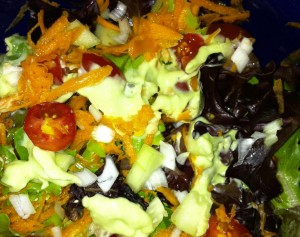I don’t normally eat anything found under my bed. The vacuum cleaner can only reach so far. I also have two house cats, and that’s where they go to get a little R-and-R from my three kids. Plus I do have a kitchen stocked full with food found in usual places like the fridge or pantry. But since going gluten-free this winter for medical reasons, it’s not often I get a chance to eat a beautifully soft bagel mounded with cream cheese spread. And I really wanted that bagel.
Losing the bagel – sunny side down, mind you – to the depths reminded me of a great disappointment a few months earlier. I had just left the doors of Burger King with my three children, a baby in a car seat and two girls, ages four and five, and in the crux of my arm balanced a refill of Dr. Pepper that I was really looking forward to drinking. It was a little breezy, and the older children were tired, and the parking lot seemed to be especially busy. When I got to the car, I put the drink cup on the hood and began the process of getting the car seat into its base and the older children into their booster seats. Triumphant with how smoothly things seemed to be going, I reached for the drink cup – when suddenly, a gust of wind shot it off the car and my longed-after Dr. Pepper dumped all over the ground. I was so disheartened that I didn’t even think of going through the drive-thru to get another one.
So, yes, I wanted that bagel. I didn’t want a repeat Dr. Pepper episode.
How did that bagel get under the bed, cream cheese side down, stuck in the dust bunnies and cat hair? Well, I was doing one of my infamous multitasking attempts. I was breastfeeding my baby while sitting on my bed, using the breast pump on the other breast (due to chronic yeast), talking on the phone with a client, sketching out an idea for a project with a pen and notepad, and eating this bagel – at the same time. The baby is at that age where anything within reach is in danger and he batted at the bagel. It dropped to the floor and rolled under the bed. I couldn’t express my dismay more than grimacing a little, because I was still on the phone. And I couldn’t attempt to get the bagel before the 30-second rule, because I was still tethered to the breast pump.
My husband didn’t even blink when I asked him to please retrieve my bagel from under the bed, like I do this kind of stuff all the time…
This post is part of the “Delicate Balance” series, which chronicles the juggling act of work-at-home attachment parent Rita Brhel.





